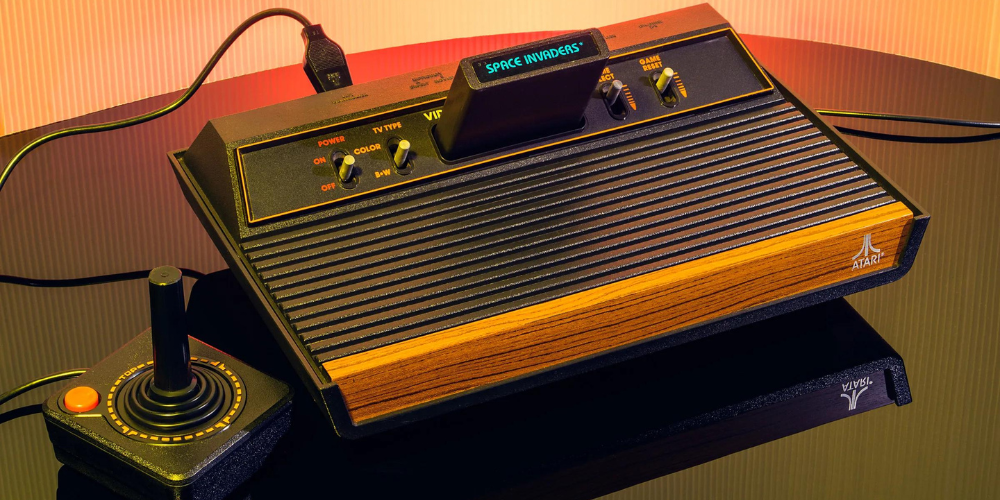
Introduction to Gaming Giants
In the ever-evolving world of video games, certain consoles have etched their marks deeply into the fabric of gaming history. These devices transcend mere entertainment; they represent revolutionary leaps in technology, narrative, and connectivity that shaped not only the industry but also popular culture. This article pays homage to those influential gaming systems that have irrevocably influenced our digital pastimes.
The Odyssey: The Home Console Pioneer
Released in 1972 by Magnavox, the Odyssey stands as the progenitor of home console gaming. Although primitive by today's standards with its rudimentary graphics and limited capabilities, it laid down the fundamental concept of interactive entertainment at home. It gave birth to an industry and a new form of family entertainment, paving the way for all subsequent consoles.
Atari 2600: The Arcade at Home

The Atari 2600, introduced in 1977, was a groundbreaking innovation that brought the excitement and thrill of arcade favorites straight into the living rooms of countless households, effectively igniting a cultural phenomenon that would shape the entertainment landscape for years to come. With its release, the Atari 2600 not only became a beloved staple of family entertainment but also laid the foundation for the home console industry's ongoing dominance, illustrating the immense potential and profitability of the video game market. Its widespread success can be attributed to a variety of factors, including its revolutionary cartridge-based system that allowed for a diverse and ever-expanding library of games, its simplicity, and ease of use, which made it accessible to a broad audience, and its ability to capture the imaginations of both young and old alike.
Nintendo Entertainment System (NES): Resurrecting Gaming
In the wake of the disastrous video game crash of 1983, an event that led to widespread skepticism about the long-term commercial prospects of video games, the market appeared in desperate decline, with overflowing warehouses and financially beleaguered companies becoming the new norm. It was within this bleak context that Nintendo, a Japanese company then primarily known for its arcade offerings, took a bold gamble by launching the Nintendo Entertainment System (NES) in North America in 1985. Anticipation and trepidation were palpable as the NES made its debut, but Nintendo's ingenious marketing and carefully cultivated library of games soon dispelled any lingering doubts about the resurgence of the industry.
Sony PlayStation: A New Player Enters

In the landscape of video gaming in 1994, the industry was firmly in the grip of veterans like Nintendo and Sega, whose gaming consoles dictated the contours of digital entertainment. However, in a bold strategic move, Sony disrupted the status quo with the introduction of its own gaming behemoth—the PlayStation. This innovative console, unlike its predecessors, backed the advanced CD-ROM technology over the traditional cartridge-based format of the time.
This pivotal decision unlocked unparalleled potential, allowing developers to craft worlds and experiences that were previously inconceivable. The increased storage capacity of CD-ROMs meant that games could now incorporate cinematic-quality graphics and orchestral-quality audio tracks, delivering a sensory feast that radically transformed the perception of video games.
Xbox Live: Revolutionizing Online Play
As the new millennium dawned, the video game industry witnessed a significant development in the form of Microsoft joining the console battlefield with the introduction of its Xbox console in 2001. With the debut of the Xbox, there emerged a console that was not only characterized by its potent hardware capabilities but also by a groundbreaking service that would come to be a defining factor in its overall impact on gaming culture.
This service, known as Xbox Live, revolutionized the gaming landscape by bringing online multiplayer experiences into the living rooms of gamers all over the world. Before the advent of Xbox Live, online gaming on consoles was a niche and underdeveloped feature that hadn't yet been seamlessly integrated into the console experience. Xbox Live changed all that and made it possible for players to connect with one another across vast distances, competing, collaborating, and forming communities in ways hitherto unseen in console gaming.
This concept of connected play, which Xbox Live pioneered, has since evolved to become an integral part of what it means to engage in modern gaming, to the extent that an always-online environment has become the norm and an expected feature amongst contemporary gamers who thrive on interconnected play experiences. By enabling friends and strangers alike to interact in virtual landscapes, share achievements, and engage in digital camaraderie, Xbox Live set the stage for the online multiplayer future and cemented the expectation that consoles should offer robust online capabilities as standard fare. This has had a lasting impact, shaping the industry and the design of games and gaming networks that followed, influencing both the technology and the social fabric of the gaming community.
Nintendo Switch: Hybrid Gaming Perfected

In recent years, few consoles have challenged traditional expectations as boldly as Nintendo's Switch, which was released in 2017. This groundbreaking device has redefined the gaming landscape with its unique hybrid design, seamlessly combining the portability of a handheld console with the robust capabilities of a traditional home gaming system. The Switch's flexibility allows players to enjoy their favorite games on the go, as well as from the comfort of their living rooms, by easily docking the device to a television.
Its versatility has garnered widespread acclaim, appealing to a diverse audience and continually pushing the boundaries of what is considered possible in the integration of gaming into everyday life. The Switch's influence extends beyond just hardware, inspiring game developers to create experiences that capitalize on its dual nature. As a result, it not only offers sheer convenience and adaptability but also fosters innovative gameplay possibilities that enrich the player's experience, making it a landmark achievement in the evolution of gaming.
A Look Back at Gaming's Legacy Systems
This journey through history highlights pivotal moments where innovative gaming systems redefined our collective understanding of what video games could offer. In the early days, consoles like the Atari 2600 emerged, transforming living rooms into hubs of communal family fun, where pixelated blocks on screens sparked lively competition and laughter among siblings and friends.
As technology progressed, systems like the Nintendo Entertainment System and the Sega Genesis brought more complex narratives and gameplay mechanics, captivating a broader audience. Fast forward to the late 1990s and early 2000s, the advent of the PlayStation and Xbox consoles introduced an era of high-definition graphics and immersive storytelling, drawing players deeper into intricately designed worlds.
The true game-changer came with the proliferation of internet connectivity, which gave rise to massively multiplayer online games such as 'World of Warcraft' and 'Halo' that facilitated intense online battles across oceans. This pivotal leap not only expanded the scope of what video games could encompass but also fostered international communities of gamers, bridging cultural and geographical divides.
The legacy left by these consoles carved pathways for current generations to enjoy increasingly engaging virtual worlds while bonding over shared digital adventures. Today, with the advent of virtual reality and augmented reality, along with the ever-growing sophistication of AI in gaming, the landscape continues to evolve, promising even more revolutionary ways for players to connect and explore. The story of gaming is a testament to how far we have come—a chronicle of technological innovation married with human creativity, forever changing the way we immerse ourselves in digital entertainment.